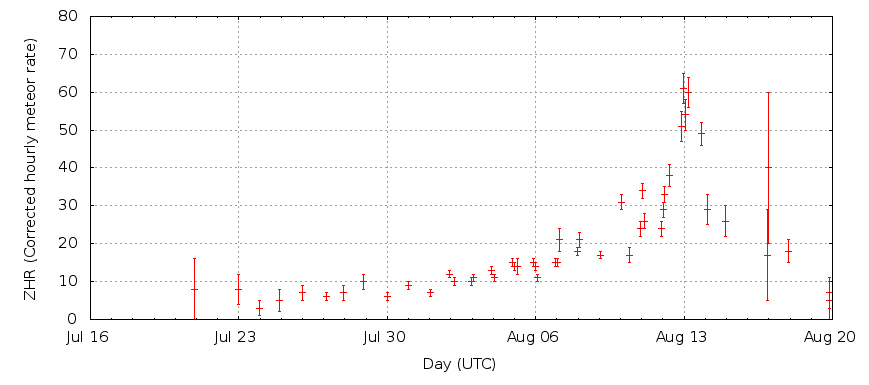Here’s what you can expect to see from a dark sky observing for several hours like the 2010 Perseids which peaked on a moonless night like this year.
I enjoy observing meteor showers from the darkest sky I can drive to in one night. Here’s where I go, what I bring (and don’t bring), and how I observe.
You will want a comfy chair that supports your neck. I bring a clipboard with blank sheets of paper and Finnish Triangle limiting magnitude star charts to determine my limiting magnitude throughout the night.
I also pack binoculars, but not for observing meteors. I just like to have them with me to look at galaxies and star clusters when not counting meteors. I leave my telescope at home, too. I bring a digital clock that doesn’t emit any light, a red flashlight, pencils, an audio recorder, and a cooler full of snacks and water. I keep on hand layers of clothes, a blanket or sleeping bag, and hand-warmers for cool nights. For comfort, I carry a first aid kit including eye drops, chap stick, and sting-ease for bug bites. One more thing I keep handy – a piece of string, in case I want to trace a meteor to its radiant by holding it up to the streak of light.
I don’t keep any light emitting devices within eyesight – no cell phone, no interior car lights, no telescope mounts or cameras that emit or blink light. You don’t have to be that drastic about darkness, but I often drive a long way to a dark sky and want to see faint meteors. Any car or phone light will ruin my dark adaptation. It can take up to an hour for your eyes to adjust again. If a car or a friend stops by, I will just take a break, or shut my eyes until the light is gone.
Once I am ready to begin observing, I scan the area of the sky I plan to watch. Note! You don’t have to look in the direction of the radiant. The Perseids all appear to radiate from (fly out of) a point – the radiant – in the constellation Perseus, and so they will appear everywhere. That’s where the string or shoelace are helpful — to trace the meteor back to its point of origin. Then I memorize the magnitudes of familiar stars nearby so I can accurately note the meteor magnitudes on my observing paper – one sheet for every 15 minutes I plan to observe. The info all ends up on this visual observing form, prepared from all the raw data. Then I sit in my comfy chair, clipboard on my lap, and wait for that first meteor to streak across my viewing field.
My accounts of the 1998-2002 Leonid Storm Multi-Instrument Aircraft Campaign (MAC)



Love the.string idea Jane…never crossed my mind to use one…mostly relied on backtracking with my finger. Stacy (from my phone)
[...] Post-Perseid depression (or how to observe meteor showers) [...]
[...] My meteor observing gear [...]